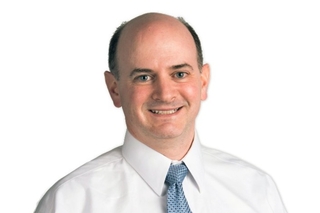Please join Yale Chemistry for a Silliman Seminar in Physical Chemistry with Prof. Greg Engel, Professor of Chemistry, Pritzker School of Molecular Engineering, the James Franck Institute, the Institute for Biophysical Dynamics, and the College, from the University of Chicago.
Abstract: Control of excited state dynamics remains a grand challenge for energy science, optical communications, and artificial photosynthesis. Interestingly, transporting and exploiting excited states hasn’t been a grand challenge for biology for over 2 billion years: nature has already done it. My research group identifies design principles to control excited states using insight and inspiration from biological systems. We construct novel spectrometers of our own design to reveal subtle dynamics and organizing concepts for steering chemical reactivity.
We want to know how photosynthetic antenna complexes collect light and funnel it to the reaction center with near perfect quantum efficiency and exquisite precision. Recently, we acquired data showing a complex interplay between the chlorophyll molecules and their environment within the protein. The resonance between delocalized excited states and vibrations on individual chromophores is used to steer excitonic energy toward the reaction center by coupling both spatial and energetic relaxation. This data has forced us to reconsider the role of a structured environment in energy transfer and continues to fuel the debate on coherent mechanisms of energy transfer in photosynthesis.
Another element of this structured biological environment is chirality (handedness), which is present in all biological systems including photosynthetic complexes. Yet, we rarely consider chirality in excited state dynamics. Our group has pioneered ultrafast chiral spectroscopies to watch chiral electronic dynamics, memory of chiral excitation, wavepacket collapse, and ultrafast circular dichroism. We first used chiral nonlinear spectroscopy to track wavefunction collapse after excitation to reveal how biology exploits dephasing to efficiently absorb light while systematically frustrating re-emission. Recently we have observed chiral dynamics that differ substantially when using a coherent broadband excitation source. A low-frequency phonon mode from the nuclear bath is found to interact preferentially with right-handed states over left-handed states upon broadband excitation, demonstrating the role of chirality-dependent nuclear interactions in the control of excited-state dynamics. The result is that left- and right-handed electronic dynamics differ by over 30% despite very small energetic differences.
The Engel Group chooses problems at the interface of theory and experiment where they can test their understanding of excited state dynamics. They look for new design principles to control chemical reactivity and often find their inspiration in biological systems. The Engel Group creates new spectrometers of their own design to reveal new dynamics and new organizing principles for steering chemical reactivity. Their aim is to approach problems through a careful balance of synthesis, spectroscopy, theory, and biophysics.
For more information on Prof. Engel’s research: Engel Group
Facutly Host: Prof. Mark Johnson
This seminar is generously sponsored by the Mrs. Hepsa Ely Silliman Memorial Fund.
Location: Sterling Chemistry Lab (SCL), Room 111
